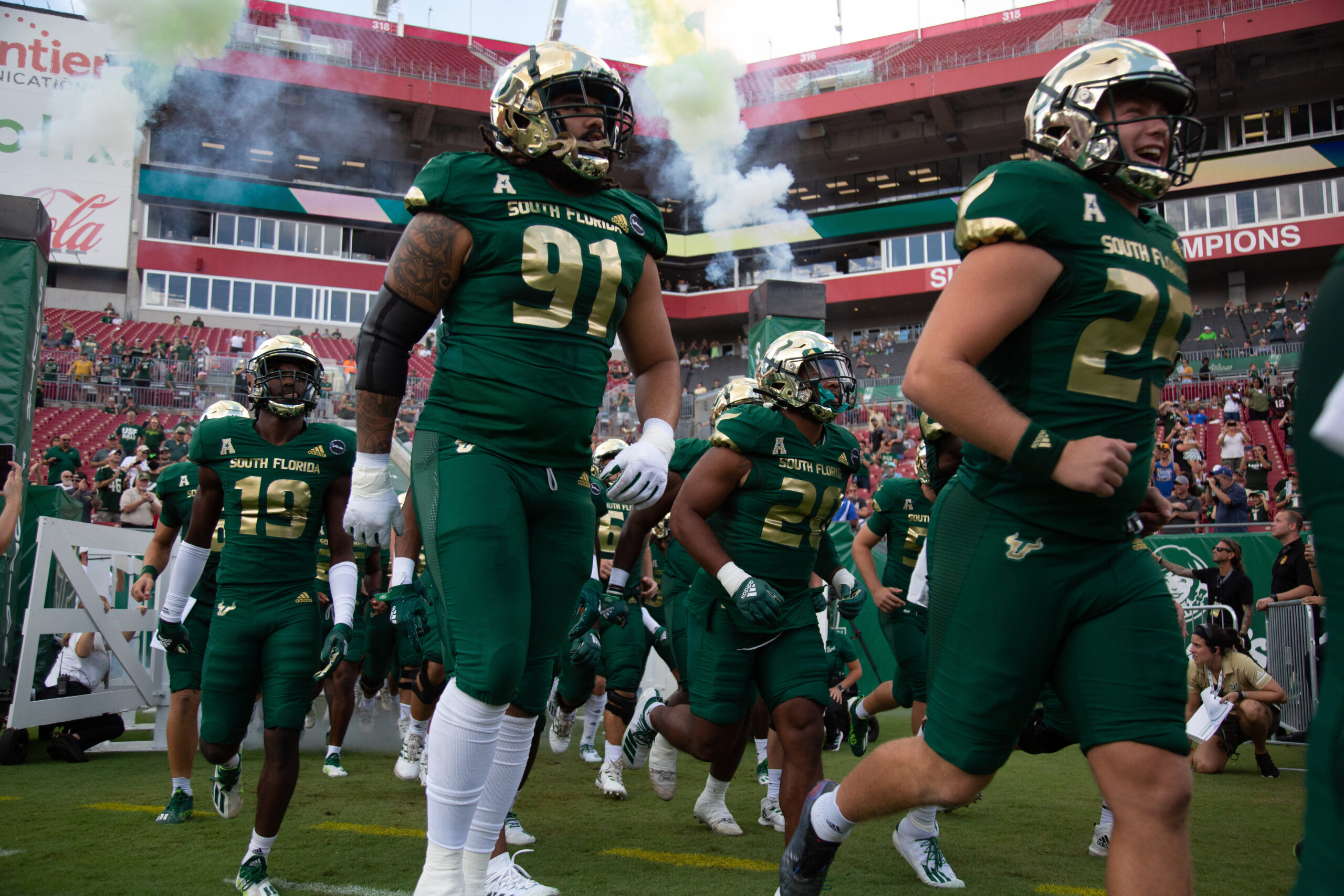Takeaways: Offense leaves something to be desired, defense can’t stop the run against Tulsa

USF looked well on its way to winning its first game against an FBS opponent since 2019 for the majority of Saturday’s contest against Tulsa, but the Golden Hurricane punched in the game-winning score with just 47 seconds remaining.
The losing streak against opponents in the top division of college football is now up to 17 games, but the most recent loss at the hands of Tulsa was about as close as it gets. There were a number of plays to be made that could’ve set the Bulls up for victory, but it was evidently not to be.
Here are five things we learned from USF’s 32-31 loss to Tulsa.
The offense isn’t a finished product
Despite the Bulls putting up 31 points in the loss, their second-highest total of the season, little of that had to do with the offense.
A score on special teams by sophomore running back Brian Battie and a pick-6 by senior linebacker Antonio Grier gave USF 14 points, and a forced fumble by Grier to open the second quarter set the Bulls up on Tulsa’s 12-yard line, which later led to a score.
The offense looked like the strength of this team through the first five games of the season, but that script was flipped against the Golden Hurricane.
Playing complementary football and succeeding in all three phases of the game is what the Bulls need to get back in the win column over the latter half of the schedule.
Run defense is a problem
USF hasn’t been able to stop the run much all season long, and the game against Tulsa was no different.
The Golden Hurricane tallied 269 rushing yards and two touchdowns on 49 attempts, good for 5.5 yards per carry. The Bulls give up an average of 226.2 rushing yards per game, fifth worst in the nation.
Allowing opponents to rack up so many yards each contest doesn’t bode well for USF moving forward. Whether it be an adjustment to the scheme or personnel, the run defense currently in place isn’t a sustainable model for victory.
Mangham is the lead back
Some fans may only remember junior running back Jaren Mangham’s performance for getting stuffed on back-to-back plays to end USF’s second-to-last offensive series, which set Tulsa up to win the game.
What Mangham did aside from that, however, carries more weight. The 6-foot-2-inch, 221-pound Colorado transfer displayed some elusiveness that he hadn’t previously shown.
Mangham is known for being a strong, short-yardage type of runner, but his 5.8 yards per carry may have been a preview of what’s to come in the future.
Shrader is more than just a power kicker
Junior kicker Spencer Shrader spent all of last season splitting the kicking duties with senior Jared Sackett. Sackett took care of business with kicks 39 yards or under, and Shrader came in for kicks of 40+ yards.
This season has been different, Shrader has attempted, and made, all seven of USF’s field goals. He is 4-of-4 from the 39-yard line in, and 3-of-3 between 40 and 49 yards.
Avoidable mistakes are unaffordable
Committing penalties and turning the ball over is never good for any team, but for a program like USF that is looking to turn a corner, those types of missteps are especially troublesome.
Tulsa turned the ball over three times against the Bulls, allowed sophomore running back Brian Battie to return a kickoff 100 yards for a touchdown and gave up a 54-yard punt return score to junior receiver Xavier Weaver.
The issue, however, is a USF fumble just before the half and a roughing the punter penalty on Weaver’s return negated some of the positives that could’ve been taken from the big plays. The Bulls are in no position to help another team beat them.







